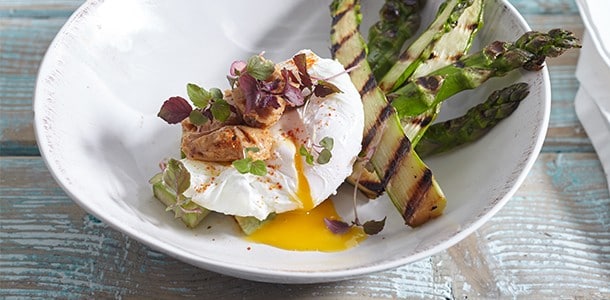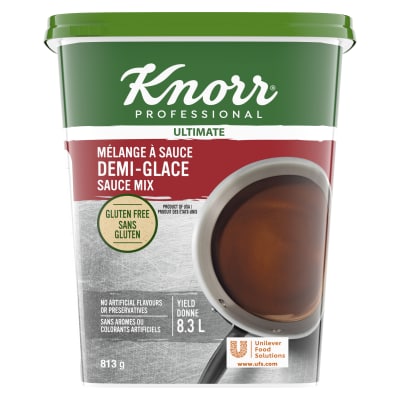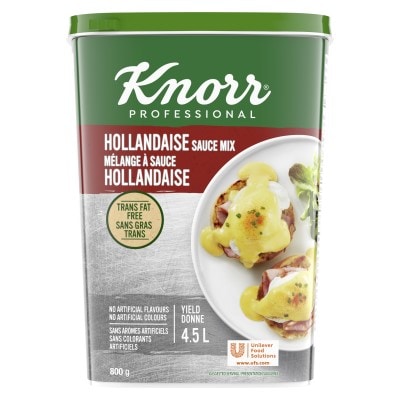With the new year right around the corner, your guests will once again be looking for wholesome dining options. They’ll seek nutrient-rich vegetables and fruit, responsibly sourced meats and fresh herbs and spices. With an increased focus on vegetables in a balanced diet, veggies will continue to move to the center of the plate. This winter, you can show your guests that wholesome eating doesn’t mean sacrificing flavour.
Preparation Improves Perception
One way to break through a guest’s notion that vegetables are boring is to prepare them in new ways that enhance their natural flavour such as roasting, smoking or serving them with a heavy char.
For an on-trend way to work more veggies into your menu, consider using seasonal vegetables as a replacement for meat or pasta. Spiralizing vegetables is a popular, unique way to easily prep veggies for use in pasta-inspired dishes, as well as on pizzas, atop burgers or salads, in tacos or even in soups.
While some vegetables remain mainstays on winter menus, such as squashes, pumpkins and sweet potatoes, many chefs are focused on new emerging winter vegetables to add a new twist to their menus.

Seasonings for the Season
Keeping go-to seasonings on hand goes a long way in making sure your vegetables are as delicious as more calorie-heavy options on the menu. The ingredients below are a great place to start when looking for herbs and spices to boost the flavour and craveability of your vegetables.
Za’atar
This unique seasoning is both an herb in its own right and a Middle-Eastern blend of dried herbs that differs per region. It usually contains oregano or thyme, sesame and sumac and is often used as a sprinkle on or a finisher for high impact flavour.
Cumin
Adds warmth and makes for a more complex taste. Add to root vegetables, stir fried spinach or curries, but be aware that a little goes a long way.
Tahini
This key ingredient in hummus is high in nutrients and offers a great texture. It can be used as a dressing, drizzle or dipping sauce.
Ras el hanout
This Moroccan spice blend is aromatic and spicy and gives warmth to both savoury and sweet dishes. The blend differs but it usually contains nutmeg, ginger, coriander, cumin, cardamom, cloves, cinnamon, allspice, anise seed and black and white pepper.
Dashi
This stock is one of the corner stones of Japanese cuisine. It is mainly made from kombu (dried kelp and bonito flakes, dried and smoked skipjack tuna that is shaved into thin flakes) and adds umami to sauces and soups.
Dried porcini
The king of all fungi is the porcino. When dried, the flavour becomes even more concentrated and savoury. It’s a perfect condiment in stocks and sauces.
“Dried mushrooms/shitake are high impact flavour for small amount and can give beefy notes.” – UFS Chef Einav
Soy/tamari
This by product of fermented soybeans is indispensable in any kitchen cupboard. There are many varieties, from light Japanese soy sauce to thicker Chinese soy and sweet Indonesian soy.
Tamarind
Tamarind pulp is dark and has a deep, tart flavour. It can also be dried in a powder. Add it to curries, chutneys and sauces for a more complex flavour.
Smoky pimenton
Pimenton is the powder of smoked bell peppers with an intense smoky flavour that really gives a boost to dishes. Add to roasted potatoes, savoury yogurt, charred broccolini, or sprinkle in a squash soup.
Miso
There are many varieties of this sweet, savoury, nutty Japanese paste made from soy or rice. It ranges in taste from the mild white variety to the dark brown and more pungent offering. It packs a concentrated, salty flavour that’s ideal in sauces and soups or even caramelized vegetables and fruits. You can also add a little paste to your pasta sauce for a unique twist.
"Miso has probiotics, like yogurt, and is pure umami — it has a huge impact for a small amount,” says UFS Chef Einav.
Preserved lemon
Whole lemons are pickled with salt and spices and develop a very distinct flavour. Blend into a salsa verde with lots of green herbs for roasted vegetables, or use in stews or marinades. It is also great for crust, cauliflower and rubs, according to UFS Chef Einav.

To get started with new and exciting flavors, give guests a taste of classic Japanese cuisine with this grilled asparagus with misobutter, poached egg and togarashi recipe.














